BACKPACKING: With Peter Case
Norman Warwick goes
BACKPACKING with Peter Case
and takes Songfacts to read on the way
Peter Case was the debut solo album by American power pop singer-songwriter Peter Case, released in 1986 on Geffen Records. It was reissued by Omnivore Records with additional tracks in September 2016. That solo album from the mid eighties had a stellar cast that included T-Bone Burnett as acoustic guitarist and , record producer.
photo 1 Joseph Henry “T Bone” Burnett III (born January 14, 1948) is an American record producer, guitarist and songwriter. He rose to fame as a guitarist in Bob Dylan‘s band during the 1970s. He has received multiple Grammy awards for his work in film music, including for O Brother, Where Art Thou? (2000), Cold Mountain (2004), Walk the Line (2005) and Crazy Heart (2010); and won another Grammy for producing the studio album Raising Sand (2007), in which he united the contemporary bluegrass of Alison Krauss with the blues rock of Robert Plant (ex-Led Zeppelin).
Burnett helped start the careers of Counting Crows, Los Lobos, Sam Phillips and Gillian Welch, and he revitalized the careers of Gregg Allman and Roy Orbison. He produced music for the television programs Nashville and True Detective. He has released several solo studio albums, including Tooth of Crime, which he wrote for a revival of the play by Sam Shepard.
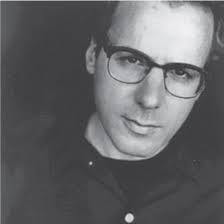
Mitchell Froom (right, born June 29, 1953) is an American musician and record producer. He was a member of the bands Gamma and Latin Playboys, and is currently the keyboardist for Crowded House. He has produced albums for several artists, including Richard Thompson, Los Lobos, Suzanne Vega, and Vonda Shepard.
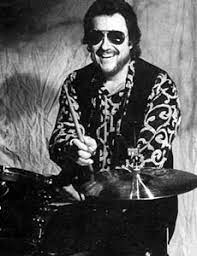
James Lee Keltner (left) born April 27, 1942) is an American drummer and percussionist known primarily for his session work. He was characterized by Bob Dylan biographer Howard Sounes as “the leading session drummer in America”. He was certainly a huge part of what I consider the best part of John Stewart´s career of rock-americana.
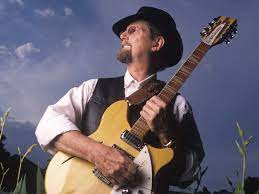
Roger McGuinn – guitar (12 string) James (Jim) Roger McGuinn /məkˈɡwɪn/ (born James Joseph McGuinn III; July 13, 1942) is an American musician.[2] He is best known for being the frontman and leader of the Byrds. He was inducted into the Rock and Roll Hall of Fame for his work with the Byrds. As a solo artist he has released 10 albums and collaborated with, among others, Bob Dylan, Tom Petty and Chris Hillman. The 12-string Rickenbacker guitar is his signature instrument
Peter Case himself (right) had been a member of The Nerves, then The Plimsouls, before venturing out as a solo artist. Whether with a rock-and-roll band or furiously strumming an acoustic guitar, Case has always been an artist in search of great songs. The Nerves were a part of the Los Angeles punk scene in the ’70s, while The Plimsouls spanned punk and new wave through the late ’70s and much of the ’80s. Then in 1986, Case explored folk-inspired songs with his T Bone Burnett-produced solo album. Now, his solo album Doctor Moan finds him mostly accompanying himself on piano. As ever and always, Case remains a restlessly creative soul.
Dan MacIntosh (Songfacts): I was pleasantly surprised by the sound of your album with all the piano on it. I’ve seen you a few times live playing acoustic guitar, and it was very different. What was the experience like for you to use more piano music on an album?
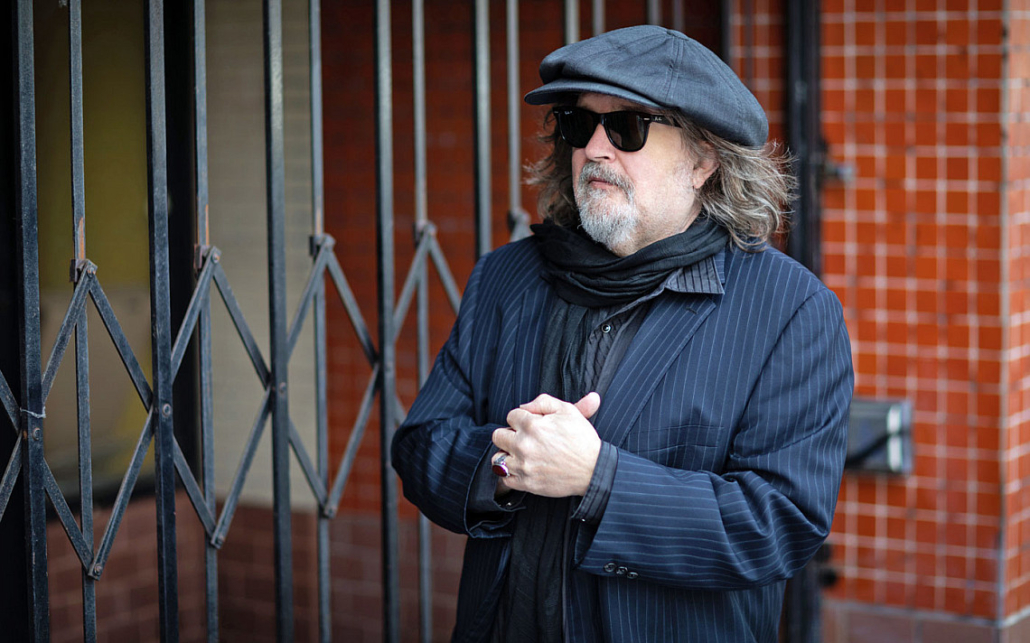
Peter Case: It was a great experience. It was so much fun and it was something I wanted to do for a long time.
I played piano ever since I was a kid, but I didn’t do it so much on my albums. When I left home, I didn’t play piano as often as I would like. I was playing guitar because I was traveling a lot. When the pandemic came along, I was in my apartment. The front room of my apartment is on the street and there’s a piano right at the very front of the apartment. I was claustrophobic – everybody was at that moment – and I just decided to play piano every day.
I had a big year on the road scheduled playing a lot of concerts, and they’re all canceled. So I decided to just sit there and play piano like I’ve always wanted to. Relax and just play music. So I would get up every day, have coffee and play piano.

I’ve always played piano for fun, just for kicks, and I love I love rock-and-roll piano and blues piano, that kind of thing. But when I sat down, I started trying to learn a few of the things I’ve always wanted to learn, and I do this real gutbucket version of jazz. I started learning some real simple versions of some [Thelonious] Monk, “In Walked Bud,” and a lot of different things. At some point in there, an original song started to come to me. It just started to materialize out of thin air. That came from playing the piano every day, and that’s how the album started.
The great thing about it was being able to have the time to spend on getting in the mood by playing the piano, then having it calm me. Then getting it down, having the time to learn it and then record it all in one straight line. I didn’t have to go on the road in the middle of it, so I was able to stay focused. It was really fun. It was very satisfying to play piano.
So it’s actually a positive that came out of that whole negative with the pandemic.
I guess it is. The pandemic was so terrible. I lost friends and all sorts of stuff happened, so I can’t talk too much about the positives of it. But I was able to stay here and stay focused.
Did it change the way you wrote songs? Obviously, the style of music is going to be a little bit different, but did it change your approach to how you write songs by playing piano instead of playing guitar?
I’ve always had a lot of different ways to write songs, so I don’t have just one technique. In fact, I pretty much have a new way of going about every record I do. I don’t know why that is. I’ll hit on something that will really work in one period of time and then I can’t repeat it. I just keep changing my stance on it.
Sometimes I get the words first, and other times I get the music first. Sometimes they all come in one rush. Sometimes I’ll hear the music in my head while I’m writing the words. And other times I get all the music and then hear the words inside the music. These are all different ways of doing it.
I play guitar like the way I play piano, but I make up my own chords and I have different tunings that allow me to go weird ways with it. When you’re playing in different tunings you’re always making up new things. The piano really lends itself to being able to come up with other harmonies and put chords together in different ways. It also enables you to have a moving bass and a higher part. I tried to use as much of the piano as I could.
I grew up in a house with my big sister Phyllis. She is 14 years older than me – my oldest sister – and she is a really great piano player. She was born in the ’40s. So, I was like a baby when she was listening to rock and roll. She was into Fats Domino. She played stride piano, like Fats Waller. Later on she liked Monk, but at that point when I was a kid, she would play this real moving, left-hand swinging piano. She taught me a lot on that. I was a little baby listening in my jumper while she played piano, and kids would come over and jam with her. I grew up with that, so I’ve got piano music in my bones. When you grow up around music, you get it inside your head.
Has she heard your new record?
I’m mailing it to her. She’s over in Europe. I think she’ll dig it.
I read that you attended the St. John Coltrane African Orthodox Church, which sounds like the coolest church on the planet. What’s it like to go to that church?
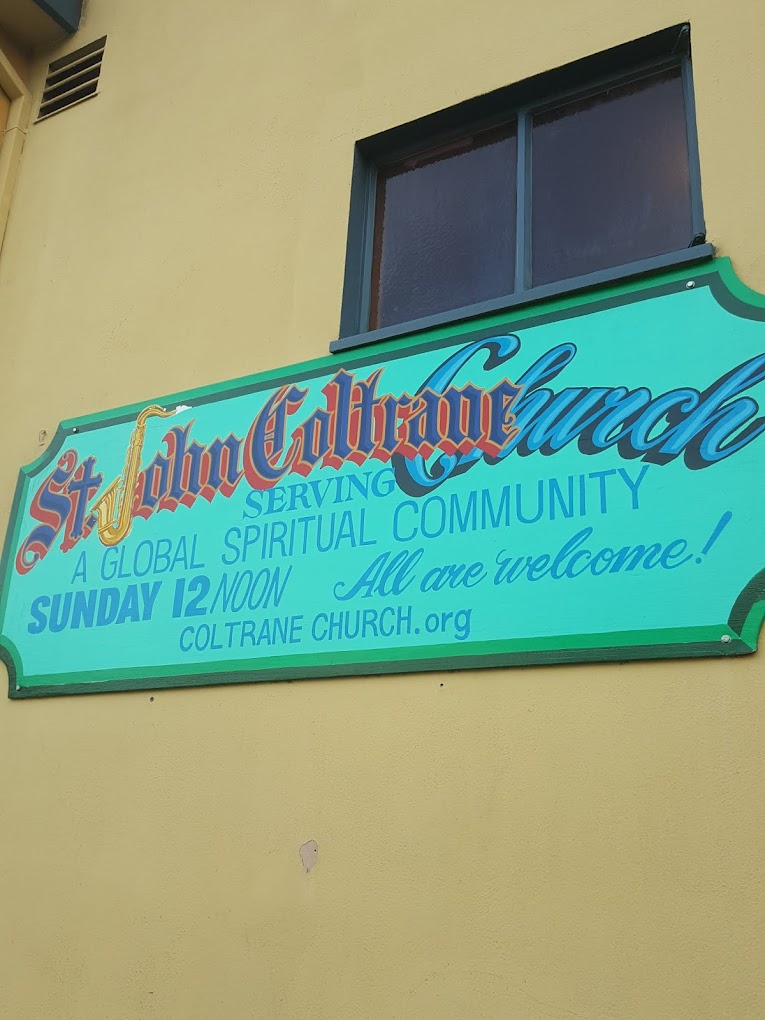
I was a substitute piano player. They had a very accomplished piano player that had moved over to the Sacramento area, so one day I was going to that church with my wife Denise and they asked, “Does anybody here play piano?” and she made me raise my hand. I did it and they called me up.
I started playing and I didn’t really know how to play that kind of music, but I studied it and listened to them, and they were great. It’s a beautiful church with a very uplifting message. The music is the main part of the service every week. They do “A Love Supreme” and a lot of other cool Coltrane numbers – “Alabama” and “Resolution.” The first couple of months I was there they never criticized me, but they also never told me what to do. Then after a few months the bass player turned to me and goes, “You’re starting to get it.”
When I first got there I was playing a bluesy gospel kind of piano in my style, but I learned how to play rhythm piano, but I can’t solo like they did.
You’re not McCoy Tyner yet.
I don’t think that’s going to be coming up. But I did learn that kind of harmony that you have to play with that Coltrane modal music. It’s like stacked fourths – that’s what keeps it open
But it made me very strong. I was playing about two, two-and-a-half hours every Sunday with them. There were jazz musicians coming through town, several sax players and different drummers and congas. It was a very powerful experience for me and it gave me confidence. And I learned so much from them, and they were very beautiful people.
You have an instrumental on the new album called “4D.” That’s the first instrumental you’ve ever written and recorded.
In The Plimsouls, there were a couple of instrumentals. It’s the first one on my solo records.
How can you tell if something is instrumental, without words?
I don’t usually make that distinction, but on this one I did. I had words for it, but it was standing just the way it was. I kept the words to myself. It just seemed right. Everything I do is intuitional, so it just seemed like the way to go.
You were talking about the church, and one of the songs on the album, “Eyes Of Love,” sounds very spiritually inspired. Is that a spiritual for you?
Yes, certainly. Like a gospel song.
Does the church you attend inspire you to write more spiritually oriented songs?
They have a very positive message. It’s a message of “love supreme,” man. That definitely moved me.
Your music has gone through so many different phases, more than I think the typical musician does. You went through the whole punk thing, and then The Plimsouls are considered one of the great power-pop bands, and then you did folk music as well. Do those songs, like, with The Plimsouls, for example, still speak to you?
Sure, but here’s the thing. The labels are a little bit incorrect. Let’s look at it for a second.
The Nerves weren’t really a punk-rock band. The Nerves were based on the songwriting and singing of the three of us, so we weren’t trying to destroy music. And we were songwriters. Jack Lee had that song, “Hanging On The Telephone.” He made millions of dollars, but these songs were very simple.
I started writing songs when I was 15. There’s a song on my album The Midnight Broadcast called “Just Hanging On.” I wrote that when I was 15. It’s exactly the way I wrote it. It’s exactly the way I played it when I was a kid.
So, I started playing bass and joined The Nerves. The Nerves were songwriters, but we weren’t that great on our instruments, and playing live was not that great – we didn’t bust it open that way. So when The
Nerves broke up, I wanted to start a band that took the kind of songwriting desire we had and make it a band that could just blow the roof off a place. So that’s what we did with The Plimsouls, and it became much more rock and roll. I put influences of soul music and folk rock on “A Million Miles Away,” but then when I started writing these other songs I went back to my roots. I came from a place of performing solo on the street as a singer and playing in coffee houses and nightclubs as a solo player before The Nerves, so I was going full circle with that. Folk music is a part of my background.
So it’s hard to label it, but it does have a folk influence. It’s got a lot of grooves, too. It’s always in the pursuit of a very moving experience in the songs and then the performances.
There was a quantum leap when I went solo and I wrote songs like “I Shook His Hand.” I started having these songs that you can completely perform solo, and they would work. And that is a difference between that and The Plimsouls. Most of the songs in The Plimsouls and Nerves you couldn’t just perform like that. So there is a difference there, but it was all building in the same direction, so it was just learning about unraveling the mysteries of music and pursuing it in a real positive way.
It was tricky, though, for the fans, with these radical leaps. People loved The Plimsouls, and The Nerves are super teenage, so it was just me growing up with my music in front of everybody, and at different times it comes in and out of fashion. You catch the zeitgeist in different ways. So, hopefully, now’s another moment like that.
They’ve made this movie [Peter Case: A Million Miles Away] that encompasses my whole career, and this record pulls a lot of the loose ends together. So that’s a long-winded answer to your question, but I still play “A Million Miles Away,” and “Oldest Story In The World,” and I still play “When You Find Out.” There’s a lot of Nerves fans and I want to bring them along.
“Walk In The Woods” is such a striking story song. Do you remember writing that song and the inspiration for it?
Oh, yeah. I was sitting in a coffee shop called Ben Frank’s down on Sunset Boulevard. I used to go in there, drink coffee and do the crossword puzzle during the songwriting periods, just to get out of the house. I was sitting there and all of a sudden, some of the phrases started to come to me from the things I was writing on the newspaper. I go, “Oh my god, I’m getting a song here!”
I paid the bill and when I got in my car it kept coming to me. I had to drive down Sunset Boulevard, up Laurel Canyon Boulevard to where I was living on the hill up in this cottage. By the time I got up to it, I’d written almost all the lyrics on the newspaper. I came into the house, picked up the guitar, and just played all that music and sang the song. Like once. That was it. Bam! The whole song just showed up like that.
It blew my mind. It was completely formed. Sometimes things come to you when you’re doing something else, like a crossword puzzle.
Right. It’s almost as if the song had a mind of its own, and it was going to get written.
Yeah, it needed to be written. It was very exciting. Really, it was fun. It was one of the first ones that I wrote for the solo record.
And then “Travelin’ Light” came later.
Maybe the next record? Yeah.
I think it has some of the guys from Los Lobos on it. I was listening to it today, and it just sounds like a Los Lobos song with a different singer.
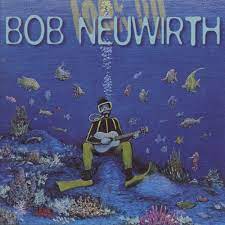
David Hidalgo was really into Cajun music at the time, so he was studying these Cajun guitar players, and he hadn’t cut it yet. They hadn’t recorded “One Time One Night” yet. So, it was right around the same time that they were just about to record.
I wrote that song with Bob Neuwirth. Bob was a great friend of mine. In fact, I played that song at Bob’s memorial a little while back. A great songwriter, a big influence on me.
How often do you write songs with other writers?
Not very often now. At the time I wrote a lot with Bob. Everyone’s trying to find somebody to write with, but I enjoyed writing with Bob.
Didn’t you write a song with the late John Prine as well?
Sure. There were a few songs with him.
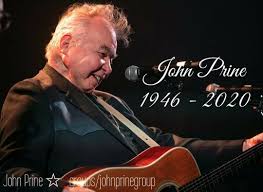
How was that experience? I’ve always thought of him as just amazing
I show up over there and the song materializes. It was really fun working with him.
There’s a song that Emmylou Harris covered of his called “Hello In There” that I think he wrote when he was a young man. And I thought, how does he understand people, elderly people, so well, when he hasn’t lived long enough? It’s almost as if he had knowledge beyond his years.
You run into people like that. I think a lot of us have that kind of knowledge when we’re kids. But he was a very sensitive person. He probably lived that song seeing people and feeling that way about it.
Can you think of a song that you wrote with him that you’re especially proud of?
I like the one that he recorded on one of his live records. “Space Monkey” was the one that we wrote. It was a lot of fun.
We wrote that one night at his place. I met him up in Canada at a festival. When I was going through Nashville and playing this place called The Bluebird, John showed up there to get a table reserved up front. It was like, “Oh my god, John’s coming to the show!”
He came all alone. He just sat there, had a few drinks and watched the show. It was kind of intense for him to listen to the show like that, but it was great. He was really fun to be around and really supportive. Just a really great person.
We got to his place and wrote a song called “Wonderful 99,” and I cut it. Then I went there another time and we wrote a song called “Space Monkey,” because he said, “Let’s write a song.”
Dude had these ideas for songs that were funny just themselves – just the ideas. When we wrote “Wonderful 99,” he goes, “Let’s write a song set in Bismarck about imaginary heroes.”
He was washing the dishes. We were right by the sink and he just looked over at me and said, “Let’s write a song.” We just sat down and wrote it. That was crazy. We had a lot of laughs, and then “Space Monkey” was very similar. We were over at his house and he was cooking. We were fooling around for a while, and he had this song he wanted to write. He had a song he played every time he opened up the guitar case. He had music, but he never had any words for it. He couldn’t figure out what to write about. Then John Prine goes, “Let’s write a song about the first monkey that went into outer space. What he’s been doing since his 15 minutes of fame.”
So you guys put yourself inside the mind of a monkey?
Yeah. And from there, the song just wrote itself. It was like two in the morning
I’ll bet now you treasure those memories since his passing.
Oh, so much fun. It was magical writing with Prine. I used to play gigs with him. He was just a great guy.
April 5, 2023
some photos: Ekavara Kitpowsong




Leave a Reply
Want to join the discussion?Feel free to contribute!